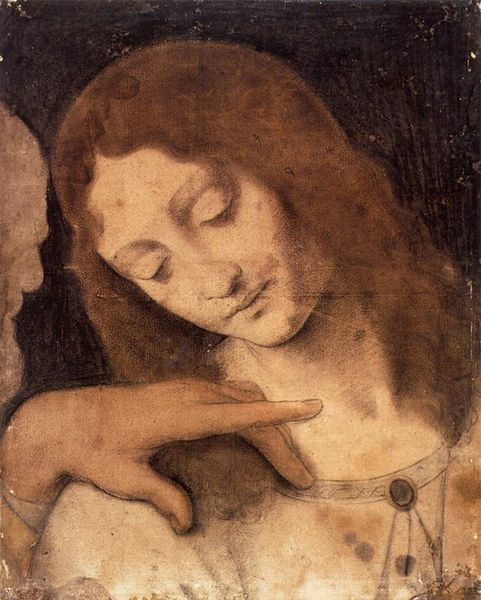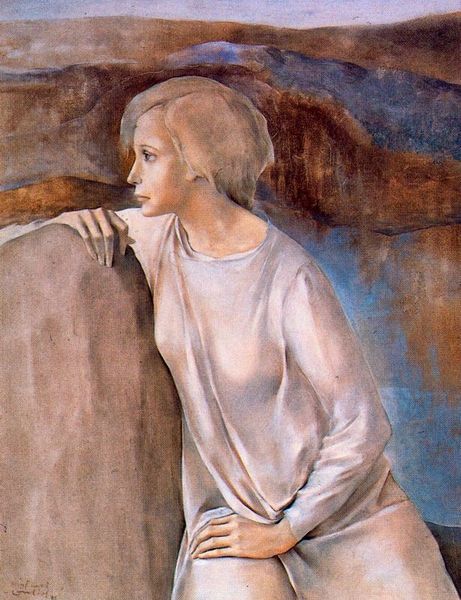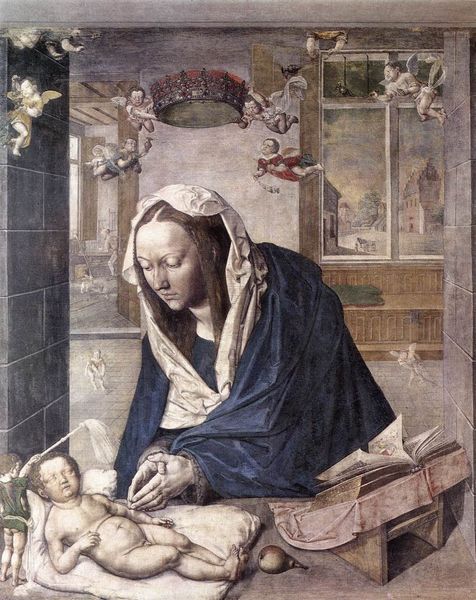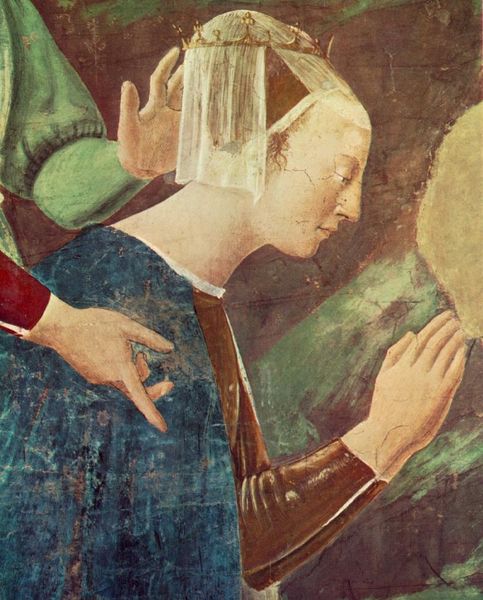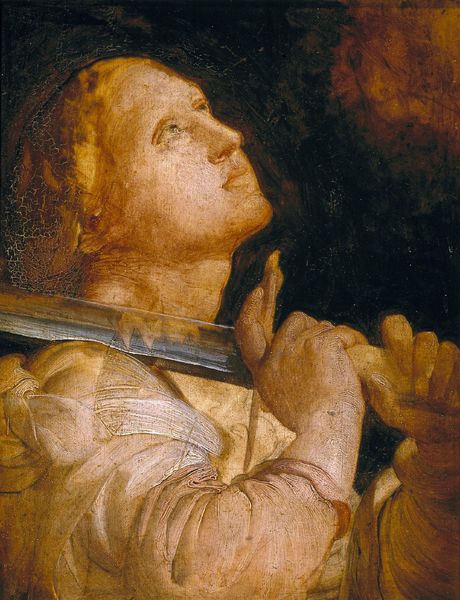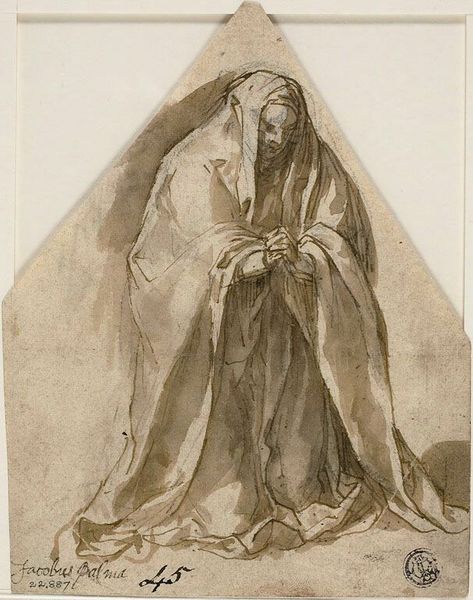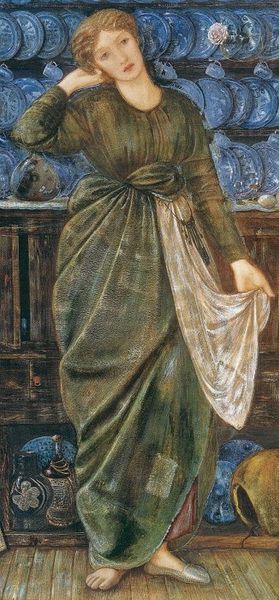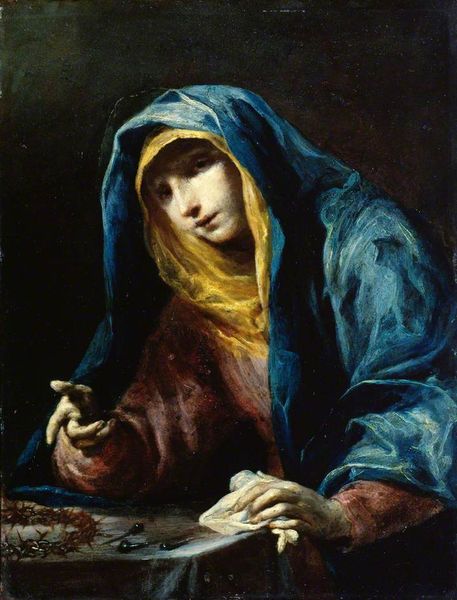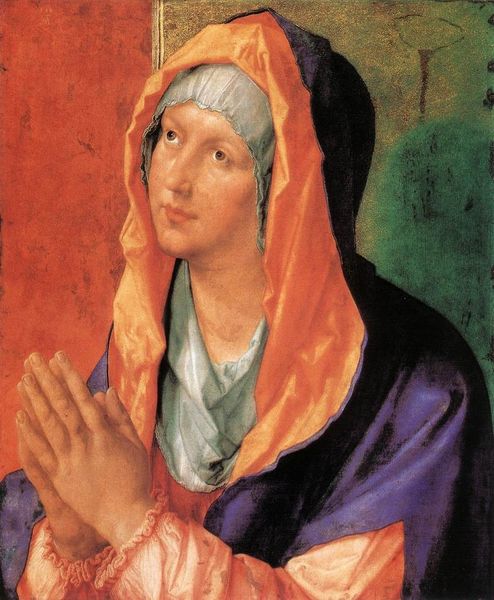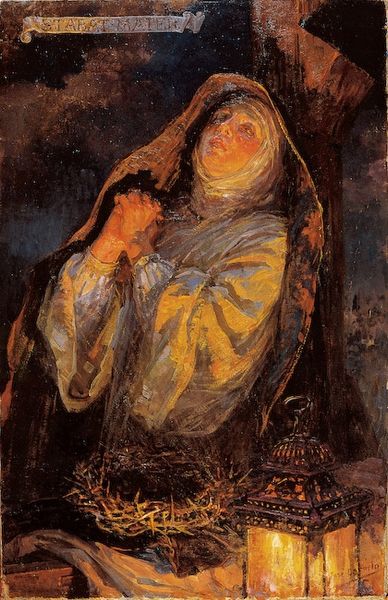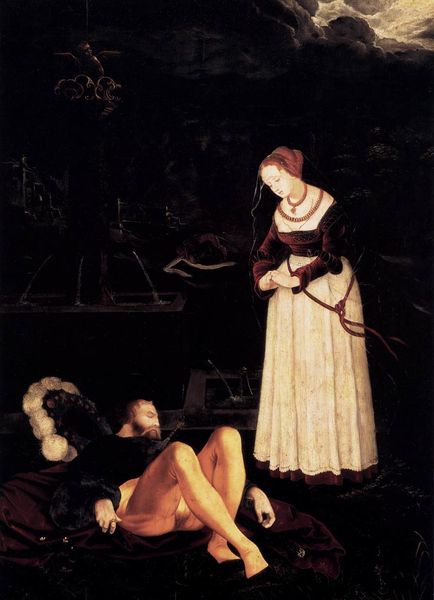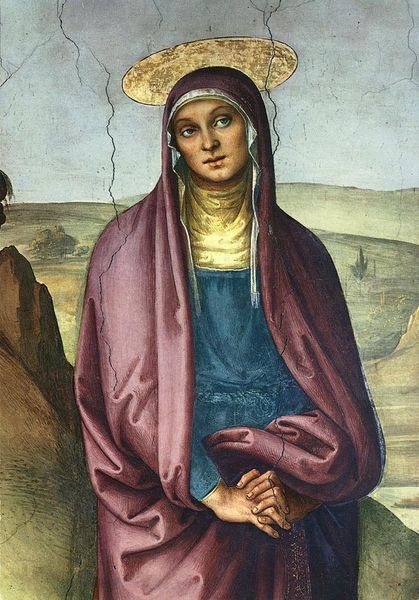
Entombment (detail from The bottom of The first view of the Isenheim Altar) 1515
0:00
0:00
Copyright: Public domain
Matthias Grünewald rendered this panel of the Isenheim Altarpiece, likely around 1515, with oil paint. Here, the Virgin Mary’s face is shrouded, her eyes hidden beneath her veil, a gesture that speaks volumes. It’s a motif we see echoed through the ages: figures in mourning, their faces concealed, a universal sign of grief and introspection. The face and veil become a powerful symbol, resonating with the subconscious—a physical manifestation of inner turmoil, reflecting centuries of shared human experience. Consider how this gesture appears in ancient Greek tragedies, where veiled figures lamented their fate on stage, or in funerary art across various cultures. In each instance, the hidden face amplifies the emotional impact, inviting viewers to project their own feelings of loss and empathy onto the figure. This veil resonates with collective memory, tapping into deep-seated psychological responses to suffering. The artist masterfully engages our subconscious, drawing us into the depths of human suffering, a visual echo that continues to resonate through time.
Comments
No comments
Be the first to comment and join the conversation on the ultimate creative platform.
